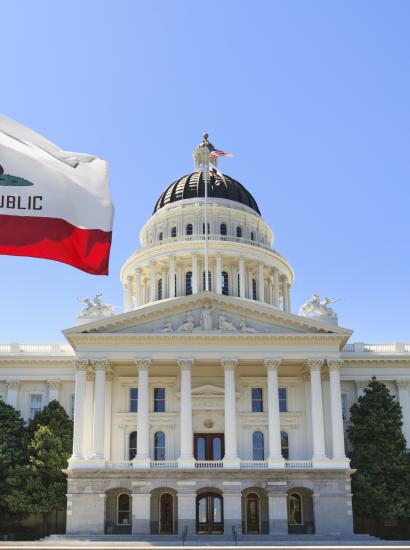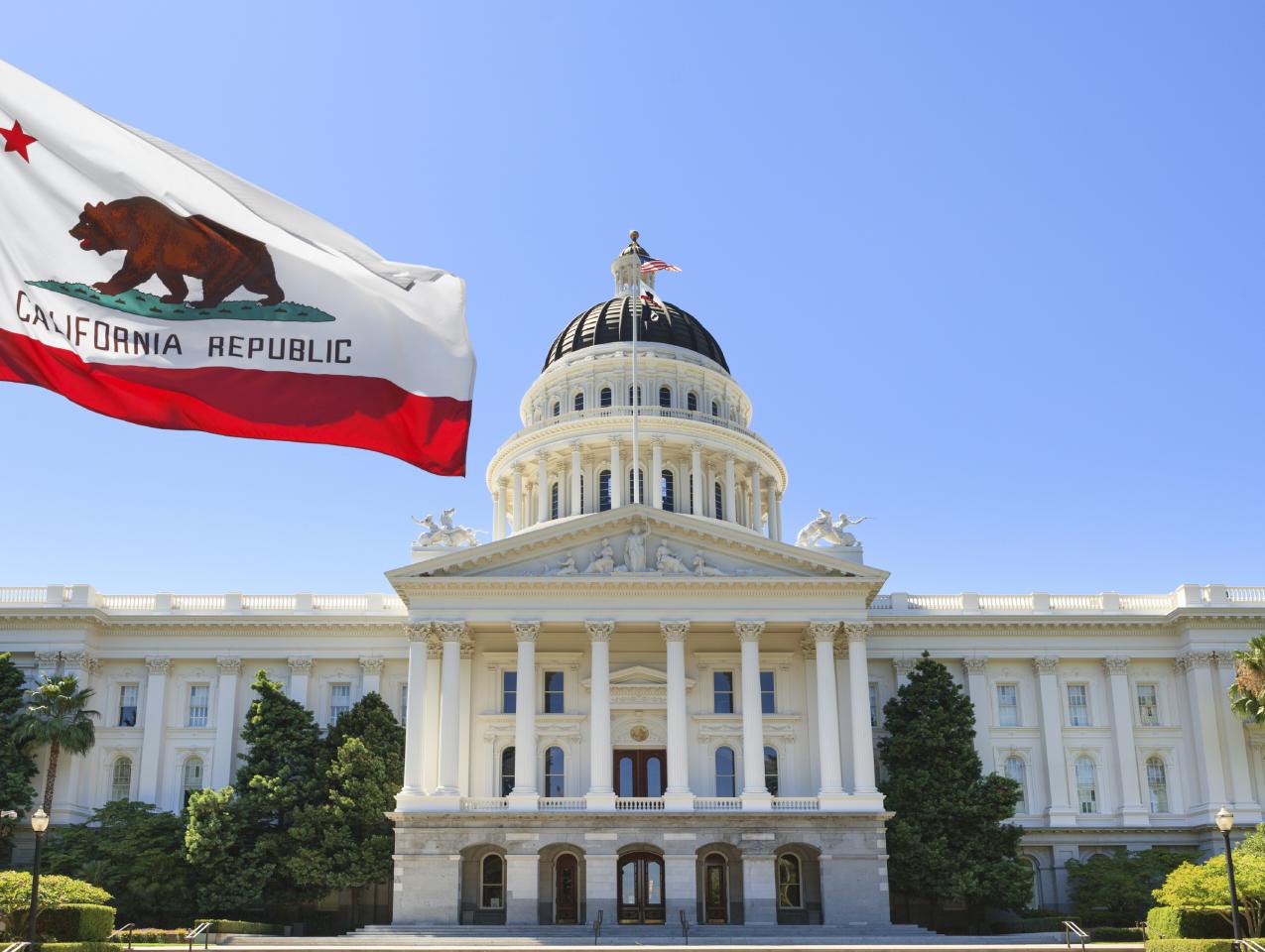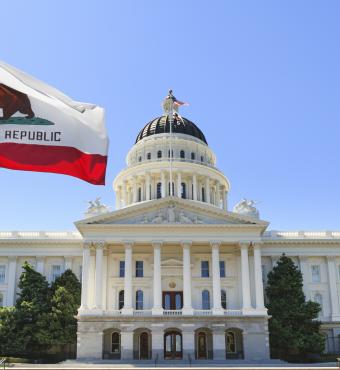Some of the Democratic presidential candidates have a natural following in California.
Take, for example, former New York City mayor Michael Bloomberg. Among his policy “plans”: making America a leader in the fight against climate change and giving Medicare the power to negotiate prices with drug companies. Those sound an awful lot like pieces of California governor Gavin Newsom’s agenda.
Then there’s former South Bend mayor Pete Buttigieg, the first major openly gay candidate for the White House. The married Buttigieg can sympathize with those Californians who’ve been front and center in the same-sex marriage debate for the past decade and a half, be it ballot fights or acts of civil disobedience.
But what about billionaire activist Tom Steyer, the only Californian left in the race? What does his agenda say about his knowledge of the Golden State?
Steyer’s “people over profits” economic agenda includes a 1% “wealth tax” that kicks in at net worth above $32 million, which the candidate claims will generate over $1 trillion “for healthcare, education, environmental and criminal justice programs.” That’s much in sync with the California approach of the past decade—two ballot measures that created and later extended personal income tax increases on incomes over $250,000 in order to fund state education and health care programs.
However, it’s Steyer’s “structural reform” plan that suggests the candidate needs to brush up on how governing is conducted in Sacramento.
Steyer proposes a “national referendum” process circumventing Congress and the White House, whereby the American electorate gets to vote on “no more than two key issues” annually. Per Steyer’s campaign website, “This process would increase voter participation, thwart congressional gridlock, and give the American people more power over their democracy.”
Such an idea would be dead on arrival in Sacramento, where Democrats enjoy supermajority control of both branches of the state legislature, not to mention control of every statewide constitutional office.
What would possess Steyer to want to implement a “national referendum” process? Because, before the present White House run, that was Steyer’s m.o. in California and elsewhere around the country—spend portions of his personal fortune on ballot measures that didn’t require legislative or gubernatorial buy-in. Sometimes that approach has worked (Steyer won big in California, in 2016, with voter-approval of the tobacco-taxing Proposition 56). Other times, Steyer has lost (also in 2016, and despite the billionaire’s investment, California voters rejected Proposition 62 and repeal of the death penalty).
However, there’s one facet of the Steyer reform agenda that suggests the candidate could benefit from a primer in the failings of California state politics. And that would be Steyer’s embrace of congressional term limits (under his plan, House and Senate members could serve only 12 years on Capitol Hill).
Steyer’s idea has populist appeal (this 2016 Rasmussen survey shows congressional term limits receiving 74% approval from likely voters). And it’s allowed the candidate to distinguish himself from the crowd at Democratic presidential debates (“I’m the only person on this stage who will talk about term limits,” Steyer boasted at the November debate in Atlanta).
But what would happen should Steyer be granted his wish? Sacramento offers a cautionary tale.
In 1990, California voters passed Proposition 140, which imposed term limits stricter than what Steyer’s proposed—three two-year terms in the state assembly and two four-year terms in the state senate, plus a lifetime ban on seeking the same office once the limits were reached.
Those rules were altered in 2012 with the passage of Proposition 28. That ballot measure was sold to California voters as further “punishment” of lawmakers by reducing their overall time in the state legislature from 14 years to 12 years. However, it gave lawmakers what they craved most (other than deep-sixing term limits): a chance to amass seniority. Thanks to Prop 28, lawmakers can spend their entire 12 years in the State Capitol in one legislative chamber, an improvement from the previous six- and eight-year ceilings.
Here’s what Steyer would find if he took a closer look at California’s term-limited state government in Sacramento (in addition to the legislative cap, state constitutional officers can serve only two four-year terms):
No More Legislative Heavyweights. I once wrote speeches for a California governor (Pete Wilson) who could fall back on 25 years of working knowledge of Golden State politics anytime he entered into negotiations with the Democratic-controlled legislature (before serving as California’s 36th governor, Wilson had spent four years in the state assembly, 12 years as mayor of San Diego, and another eight years as a US senator).
Wilson’s legislative sparring partner back in the first half of the 1990s: then Assembly Speaker Willie Brown, also with a quarter of a century invested in state politics (it was Republicans’ frustrations with Brown that sparked the term-limit push in 1990).
Wilson and Brown embodied a better era of Sacramento politics in which governors and well-tenured legislative leaders punched at the same weight. That’s no longer the case. Willie Brown left Sacramento in 1995; the assembly’s seen 12 speakers in the 25 years since. Brown himself summed up the problem: “It took 16 years before I became Speaker of the California State Assembly. Now, it takes six weeks.”
Musical Chairs. Steyer’s term-limit proposal claims that members of Congress, deprived of a boundless stay in Washington, instead will “focus less on getting re-elected and more on doing what’s right.”
That’s not the case in Sacramento, where lawmakers at times are truly bad at the pursuit of altruism (look no further than the legislature’s recent failure to address California’s chronic housing shortage, despite the public’s frustration with a lack of affordable housing and the state’s growing homelessness population).
As for lawmakers focusing “less on getting re-elected,” consider the machinations in California’s last statewide election. John Chiang, the state treasurer at the time, ran in the gubernatorial primary, having previously served two terms as state controller and a decade on California’s State Board of Equalization. Chiang’s predecessor as treasurer: Democrat Bill Lockyer, whose three decades in Sacramento included time as state attorney general and the state senate’s president pro tempore.
So much for term limits injecting new blood, despite Steyer’s advertising claim that term limits are a ticket to “a new, more diverse leadership.” In fact, of the eight incumbents presently holding a state constitutional office at present in California, only one (Lt. Gov. Eleni Kounalakis) is a newcomer to Sacramento politics.
Who Runs the Government. One final lesson for Steyer: how congressional term limits could embolden the very special interests he wants to emasculate.
Sacramento’s experience with term limits has seen lawmakers not leaving town when their time’s up but instead looking for government-related work—i.e., lobbying, advocacy, consultancies, and legal advice. It’s a vicious cycle: lawmakers and their legislative staffers gain experience and then go into the private sector; inexperienced lawmakers who take their place turn to their predecessors—now with clients to represent and agendas to push—for guidance.
Is that the citizen’s government Tom Steyer seeks?
Several years ago, I wrote this Sacramento Bee column suggesting that it was time for California to reconsider its term-limits experiment. However, I didn’t want to give legislators free rein. My suggestion: after 16 years in Sacramento, California lawmakers should be required to take a four-year “time-out” from state government before running for a legislative or statewide office. Such a hiatus might give a lawmaker a chance to better see the world beyond the state capitol bubble (in my opinion, one of the reasons why Jerry Brown turned out to be an effective governor over the past decade was the 28 years separating his first and second administrations).
Maybe the same “time-out” could apply to Tom Steyer, assuming his presidential campaign fizzles after California’s March 3 presidential primary. Rather than continuing to shower money on candidates and causes, Steyer would be better served by studying the real-world effects of the political reforms he espouses.
And there just happens to a case study waiting for him in Sacramento.
















